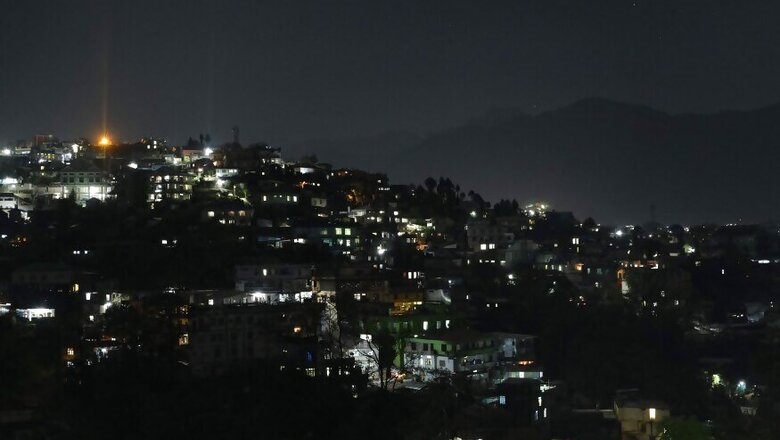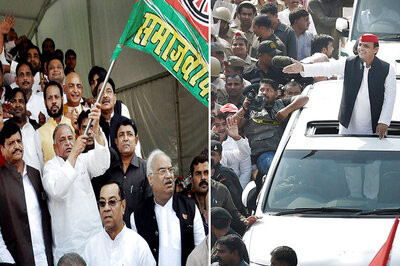
views
In a cataclysmic year during which the whole world has been beset by Covid-19, gone almost unnoticed is the 75th anniversary of the end of the last great catastrophe to befall our planet — WWII. But even within the context of that extraordinary war, there are amazing battles that have been forgotten.
One such slice of history is the Battle for Kohima-Imphal, which was a decisive turning point in the war. It ended with the first major defeat suffered by Japanese forces in the Burma theater and thwarted their ambitious plans to invade India.
In fact, in 2013 it was voted by the National War Museum as Britain’s greatest battle ahead of the more celebrated engagements of D-Day and Waterloo. “The victory was of a profound significance because it demonstrated categorically to the Japanese that they were not invincible,” said historian Robert Lyman at the museum, following the announcement. “This was to be very important in preparing the entire Japanese nation to accept defeat.”
The two northeastern states of Manipur and Nagaland and their capitals of Kohima and Imphal formed the critical frontier for British India in their war against Japan on the Burmese front.
A key route ran from the British supply base at Dimapur through Kohima up on a ridge in the Naga Hills and down to Imphal in a small encircled plain in Manipur and from there into Burma, the country known today as Myanmar.
“Operation U-Go” was an audacious plan by the Japanese military command to capture this road by using three divisions to attack simultaneously south and north of Imphal and to directly take Kohima. Had it succeeded it would have given them the critical springboard they needed to launch an all-out attack on British India.
Today’s visitors to Kohima will see no traces of that long-ago battle. The urban sprawl of the town has covered up the hills over which it was fought. But there is a World War II museum (entry Rs 50) located within the Naga Heritage Village about 10 kilometers south of town.
Displays include a diverse range of weaponry, tabletop models of battlefields, soldiers’ uniforms and historic photographs from both warring armies, though little attention has been paid to organization or detail.
Even the interesting war documentary that plays in the background is spoiled through poor acoustics and badly positioned display cases, which obstruct the screen.
A visit to the Kohima War Cemetery, however, is not to be missed. Beautifully maintained by the Commonwealth War Graves Commission, visitors will find the plots of British and Indian servicemen who lost their lives in the defense of Kohima, numbering 2,340 in all.
The British and Muslim soldiers are commemorated through simple elegant bronze plaques laid out in neat rows and terraces, while the names of their Hindu and Sikh compatriots who were cremated are inscribed on a separate memorial at the top of the cemetery.
It is impossible not to be moved by the quiet beauty of the place and the heartrending messages on the gravestones from the families of the fallen heroes.
Remembering the battle
The Japanese attack caught the British by surprise as their High Command had not expected the enemy to move so swiftly and in such large numbers through the thick jungle and mountainous terrain.
They cut the Kohima-Imphal road and quickly surrounded the British garrison defending Kohima. Over 16 crucial days beginning on April 4, 1944, the much smaller British Indian force of 2,500 men held off 15,000 Japanese troops who had laid siege to the Kohima ridge.
In some of the bitterest close-quarter fighting of WWII, the battle raged the length of the ridge with the Japanese gradually pushing back the British defensive perimeter on Garrison Hill inch by bloody inch.
At one point the opposing troops were so close that they were dug in on either side of the tennis court belonging to the District Commissioner’s bungalow. Notably, the cemetery was built over the exact site of the battle on Garrison Hill and you can still see the lines of the famous court where the opposing sides faced off.
Raghu Karnad, author of “Farthest Field: An Indian Story of the Second World War,” said of the battle: “The DC’s tennis court served as the killing ground for a new sort of desperate and bloody match. If Kohima fell, all of eastern India might fall to the Japanese occupation — if Kohima stood, it would begin the rollback of the great Japanese advance on the Asian mainland.”
Relief came at the 11th hour with elements of the British 2nd Division breaking through the Japanese roadblocks to reach the beleaguered Kohima garrison on April 20.
Near the entrance of the cemetery is a memorial to the 2nd Division, which bears the poignant inscription: “When you go home tell them of us and say, ‘for your tomorrow, we gave our today.'”
Over the next few weeks fighting raged on simultaneously in Kohima and Imphal. The battle, often referred to as the” Stalingrad of the East,” drew to its bloody end with British forces gradually overwhelming the starving Japanese troops.
The Japanese commanders had underestimated the tenacity with which the enemy would defend their positions and also the overwhelming British air superiority which allowed them to continually replenish their forces with men and materials and to pound Japanese positions incessantly.
Broken in spirit and with no food and supplies, the remaining Japanese forces were chased out of Imphal and back down the Tiddim road into Burma, having tasted defeat for the first time in history.
The Japanese paid a huge price with their 85,000-strong 15th Army eventually counting 53,000 dead and missing, mostly due to starvation, disease and exhaustion. The British sustained 12,500 casualties at Imphal, while the fighting at Kohima cost them another 4,000 men. And what of the Naga tribesmen on whose land this alien war for global domination was fought?
This was warfare unlike anything they had experienced before, with the devastating bombing and shelling of their villages causing immense loss of life, homes and livelihoods. Those who were captured by the Japanese suffered conscripted labor, beatings and summary executions.
After the war, in the words of Easterine Kire — Naga author of “Mari,” the first insider story of the Japanese invasion — “the new normal that awaited the Nagas was to shape their lives in a whole new direction, not necessarily of their own choosing.”
Visiting the Imphal battlefields
Unlike the hills of Kohima, it is possible to see the battlefields where the titanic Imphal struggle played out, 140 kilometers south. This is where the main thrust of the Japanese attack came with the 15th and 33rd Divisions of the 15th Army taking on the 4th Corps of the British 14th Army.
The fighting was extremely brutal and intense, raging in the hills surrounding the Imphal plain. The remoteness of the area and the rugged terrain have kept them relatively pristine and private groups now lead tours taking in the main battlefields, airfields, cemeteries and war memorials.
Hemant Katoch, a pioneer in WWII tourism in Manipur says of these tours: “Only when you see these places for yourself do you finally comprehend the enormity of what had happened here during WWII.”
The most recent addition to the WWII tourism circuit is the Imphal Peace Museum, which was inaugurated in June 2019, the 75th anniversary of the Battle of Imphal.
Funded by two Japanese foundations, the museum is intended to be a symbol of peace and reconciliation and is located at the foot of Red Hill where the Japanese were finally routed.
To broaden its appeal, the museum focuses not just on the actual battle (depicted using a timeline, maps, artifacts and photographs) but also on the post-war transition in Manipur and present-day arts and cultural life.
For the many Japanese visitors who lost their ancestors in this epic battle and for whom there are no graves and cemeteries to visit, it offers a chance for closure, reminding us that in war there are no true victors, only losers.



















Comments
0 comment